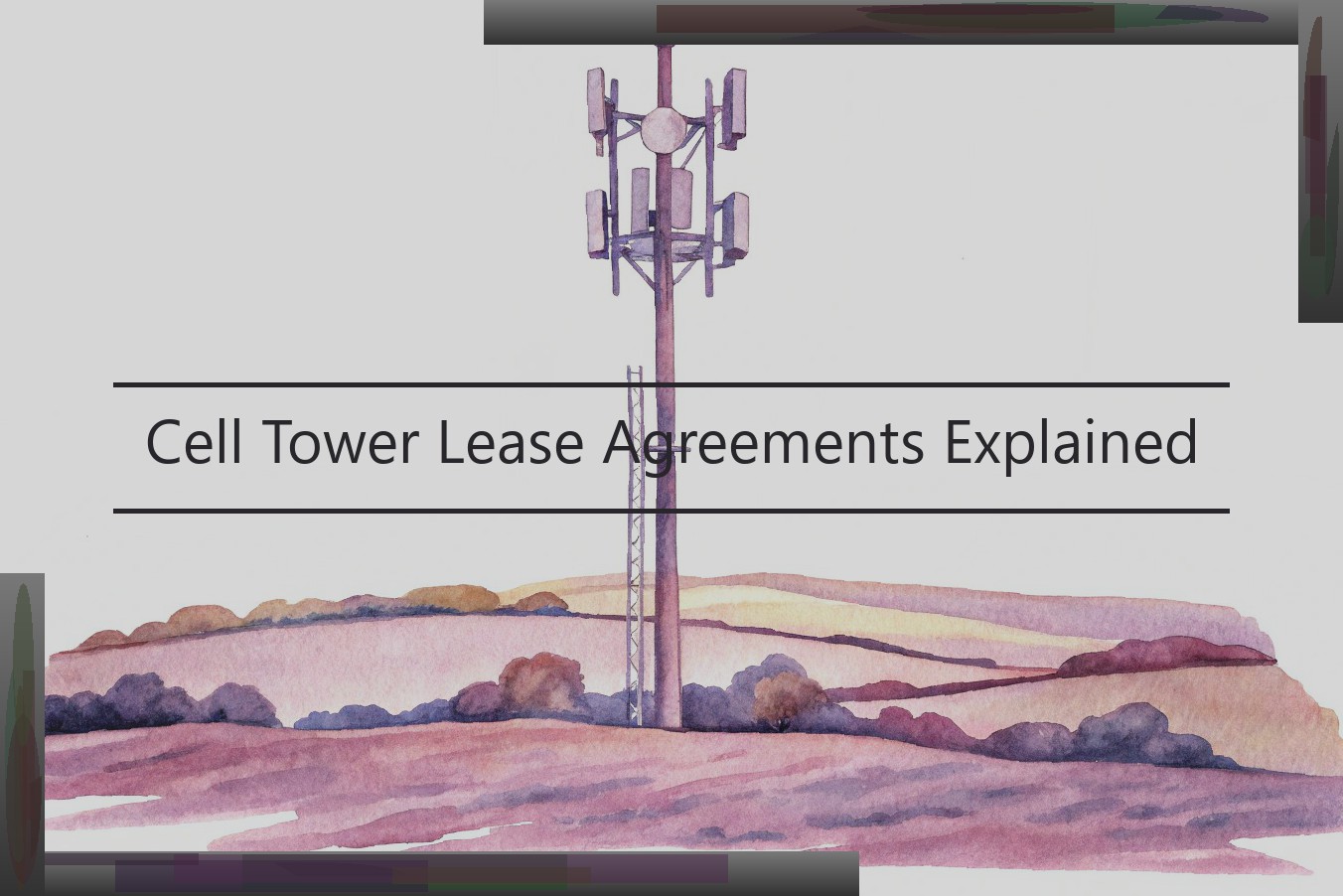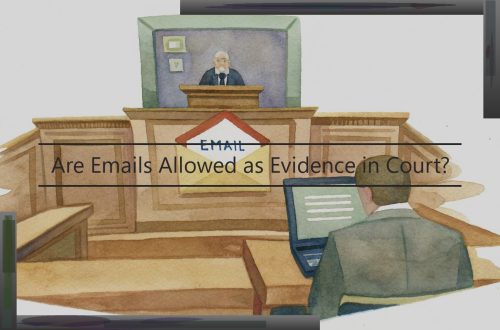Cell Tower Lease Agreements Explained
What are Cell Tower Lease Agreements?
Cellular tower lease agreements are commercial contracts between owners of properties and wireless telecommunications companies. They allow telecom firms to erect cell towers for radio communication on the land covered by the agreements. Owners of the land where a tower is built receive payment for the use of their land for the life of the agreement.
Cell towers are located on what’s referred to as a "leasehold" interest in the real property. That means the telecom firm leasing the property has the right to use the land on a contractual basis, but they do not own the cells or property outright. While the land is leased, the company retains all rights to the equipment, networks, antennas, and other construction on the land , subject to the terms of the lease.
The implied function of cellular tower lease agreements is a contract by which a property owner agrees to lease their land take advantage of the booming wireless phone industry. Almost all U.S. states are working to increase the availability of wireless cellphone service, and that’s only possible if wireless carriers can erect more towers to accommodate user demand. However, carriers are usually unable to secure proper zoning permits to build as many cell towers as they need. Instead, they turn to landowners who are willing to lease part of their property.
Wireless communications companies aren’t the only businesses who rent land to construct cell towers. Firms that build and operate cell towers for other companies do the same thing. These firms such as Crown Castle, Global Signal, American Tower Corporation, Cell Towers Unlimited, and Skyway Towers sometimes work in partnerships with wireless telecommunications firms to consolidate cost and resources.

Key Terminology in Towers Leases
Cellular tower lease agreements are generally similar in form and substance to the lease agreements of other commercial real estate assets. Among the key terms to be negotiated in a cellular tower lease agreement are the length of the term, the amount and schedule of rent payments, and the opportunity to extend or renew the term. Importantly, parties to a lease agreement are free to contractually alter the application of these provisions from the general usage we describe below.
The duration of a cellular tower lease can range from 5 to 20 years on average. A term of less than 20 years is generally acceptable from the landlord’s perspective, as long as the tenant is contractually obligated to provide periodic, scheduled rent increases throughout the term so that the owner can keep pace with inflation. From the tenant’s perspective, the longer the term, the better – 20 years is the outer limit on the term that most landlords will agree to, with long-term tenants (or tenants with prior leases) sometimes even able to negotiate longer terms.
The amount of rent and the schedule for payment generally follow the same rule – the longer the term, the more rent due on an annual basis. Newer leases generally include rental amounts at the high end of the fair market range for new tower leases. Older leases often have rents far below market, and any new lease entered into will typically replace these leases with newer rates. However, some tenant will try to renew the rates of a long-standing lease, as long-term tenants will not pay much more than the amount they currently pay under any circumstances.
The Importance of Location
The location of a cellular tower is one of the most powerful negotiating tools in the lease process. Generally, a cellular provider will be looking for a location within or close to a metropolitan area, so that they can ensure the tower will be "in search." The location can also be driven by budget, zoning, and physical site conditions.
The impact of location: Proximity to an urban center or highway can allow the provider to maximize their coverage and customer base. A lease could be negotiated with a high rental amount because the provider knows that they are hard pressed to find another good location. Conversely, if there are significant alternatives in the area, the landlord may have more negotiating power. If the property is far from a major city or highway, zoning concerns can be critical, and they can significantly alter the terms of the lease as well.
Coverage: The most important thing a provider needs, for a successful long-term cell tower, is a signal. This means subsurface planning. Does the cell operator have adequate signal? Is there room for more equipment? Is the space versatile? These and other physical and financial factors play into the negotiations. Is the site already registered with the carrier? These questions can dictate the earnings a landlord will make or the amount of investment the provider will need to pony up upfront.
Zoning: Zoning regulations differ from state to state, and the landlord and provider will need to take these into account when negotiating the lease. If full site review approval is needed before the tower can be constructed, for example, the carrier might include a short-fuse deadline. If the site is subject to special use permits, that will have to be secured before commencing construction, which can further impact rental terms.
Money Matters for the Landowner
Potential Revenue from Multiple Sites
The first thing to keep in mind, in this regard, is that the revenue from any given location may well not represent the best opportunity for financial gain. For instance, when a tower is sited on a "Tier 1 location," the money the owner can get for leasing its land can be significant, the more so as a result of the development and use of multiple antennas at that tower and a growing demand for additional tower space as a result of new wireless services. On the other hand, there are many locations where the tower owner may have found what was perceived as a "Tier 1 location," but which may turn out to be "Tier 2," or even "Tier 3," where the site has or will have no more than three antennas at most. However, an owner of multiple locations may make up for the lack of premium payments at a "Tier 2" location by obtaining a lease at the same site for twenty or more times those amounts, at another location that is perceived to be a "Tier 1 location."
Valuation of Lease Proposal
Frequently, developers or entities seeking to locate communications facilities on real properties will approach a landowner with a proposed lease form for the desired location. Before consideration of this type of proposal is made (or perhaps better, even after consideration of this type of proposal is made), it is critical for the landowner to obtain a third party market opinion relating to not only the rent for the lease, but the financial terms of the lease itself.
Factors Influencing Compensation
In addition to the land area, the type of equipment that will be utilized at the tower, its height (and possible expansion within a specified time period), the height of the cable run on the tower, the distance from the tower to the ground or roof on which it is located, the height of the structures on which the tower is located, the amount of equipment the developer seeks to place on the tower and any anticipated future changes in the industry, such as the need for additional connections, many developers will offer the landowner a payment in connection with their security monitoring. This payment, typically $200.00 to $500.00 per month for each cellular-related piece of equipment or antenna at the tower location, is for a wireless monitoring service, similar to the types provided for alarm systems in typical homes. The amount offered by a developer will vary from developer to developer and will vary based on the nature of the equipment placed on the tower. In addition to these payments, a tower owner may seek a payment in connection with inspections of the tower that are done over the course of the lease term.
Landowner’s Rights and Responsibilities
To have a legally enforceable agreement with the cell phone company, the landowner must own enough of the property to grant an interest in the property, and the landowner must have the capacity to bind any other interested owners of the property. The cell phone company will often do a title search to ensure that you have the capacity to grant the easement, and that you are not bound by any restriction that prevents you from granting the lease.
The legal rights granted by cellular tower lease agreements will vary considerably from lease to lease. In California, a lease almost always involves granting an easement, which is a limited right to use a portion of the property.
The easement may be worded in quite a few different ways . In a typical lease, the telecommunications company receives the right to use the property for the purposes of building and maintaining a wireless communication facility. The leased area on the property (the property "leased" is actually an easement) is typically described as an area in a rectangular or square shape with specific dimensions or "metes and bounds" description. The telecommunications company will also typically receive access rights so that they can drive vehicles onto the property to maintain their facility, and also to prevent any attempts to physically block access to the facility on the property.
The obligations of the parties for matters like construction, maintenance, utilities, insurance, taxes, and liability should be disclosed in the lease.
Common Pitfalls and How to Avoid Them
A common challenge in dealing with cellular tower lease agreements is the interpretation of ambiguous provisions. Such ambiguities often manifest in disputes between the landowner and the carrier about the expected rent, lease duration, and rights to upgrade equipment. Another source of ambiguity is the term "net cash flow," which appears in some cellular tower lease agreements. The landowner and carrier are often at odds about the meaning of clauses in the agreement (e.g., whether a gain-sharing agreement has been satisfied) or whether a particular business decision conforms with the agreement (e.g., relocation of personnel). These disputes can be mitigated when the agreement is unequivocal, thorough and complete. In addition, the drafters of the agreement should be clear about how the parties intend any ambiguity to be resolved before the contract is executed.
Negotiating a Fair Lease Agreement
To ensure an equitable lease terms most landowners should begin the negotiation process with their eyes on more than just the initial annual rent payment. While it’s certainly important to know what rent amount you should expect, be wary of fixing on that number and forgetting about the other terms of your agreement. Although the lease term and rent number are the two most important aspects of an agreement, other terms can have a significant impact on your bottom line, and should not be overlooked.
In determining what aspects of your agreement are most important, consider first the monetary terms. In addition to rent, which is typically due annually, other monetary terms include: Of course, these monetary amounts should be taken into consideration with respect to how long you will be granting the lease. For instance, a $.25 increase in rent can be a good deal over a 30-year lease term, but probably not in a 5- or 10-year term. Similarly, consideration should be given to how often rent payments are adjusted for inflation. If the lease does not permit regular rent increases more frequently than every five years in a 20 year lease, it may put your financial condition at risk after it lapses.
Although monetary terms may be the primary concern, other lease provisions carry equal or greater financial consequences. These include: In negotiating a lease, it is prudent to approach the discussion from the viewpoint that both sides should be flexible. For instance, it may be worth your while to accept a rent concession in exchange for a long term lease, with the aim of receiving higher rent when the terms are renewed.
Particularly important to landowners is the negotiation of a competitive termination penalty. Many amended cellular tower leases have allowed a tenant the option of paying a lump sum to terminate the lease. The term of the lease prior to amendment found a market lease was for 1% of the rental stream for the remainder of the lease, while the term of the lease after the amendment could end with the tenant paying upwards of 35% of the rental stream.
The Future of Cell Tower Leasing
The future of cellular tower leases will be dependent upon the development of new technologies, not only Wi-Fi and other low bandwidth user capabilities, but most importantly, the development of new cellular technologies which require more towers. Although none of the new cellular technologies have yet developed which require greater tower capacity, the industry continues to develop access points to utilize existing towers and expectations continue to increase that a future 5G system and small cell system will change the face of wireless and continue to leave leasing decisions into the hands of the incumbents. Other less costly technologies such as Wi-Fi devices will also continue to allow companies to avoid long term commitments to the more expensive cellular networks of today.
Leasing activities will grow as the technologies continue to evolve. At the moment , tower development activity seems slightly flat, in part due to the efficiencies that the Wi-Fi driven world has attracted. At the same time, the new small cell systems and backhaul systems battle for space within the cellular lease space’s existing "agreed to" range of fees and too many landlords feeling pressured to lower their base rental amounts as subscribers choose cheaper alternatives to the more expansive cellular service.




